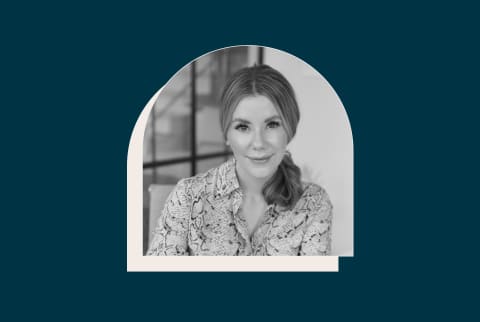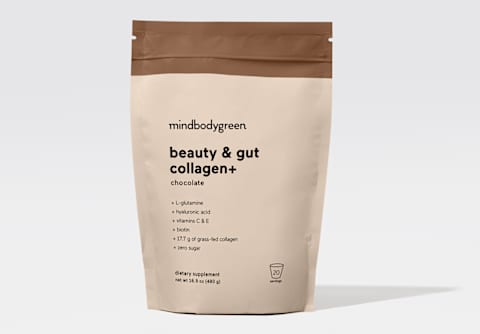Advertisement
What To Eat For Firmer, Younger-Looking Skin, From A Certified Nutritionist


If you want to learn about how nutrition influences skin aging and appearance, talk to Jennifer Hanway, a board-certified holistic nutritionist. She's become one of my go-to sources any time I write about the role of diet in skin health because she not only stays up on the research—but she makes complicated nutrition topics easy to, well, digest.
Case in point: this episode of Clean Beauty School. Hanway's joined me on the podcast before, but in her last episode, she joined board-certified dermatologist Julie Russak, M.D. Hanway works with Russsak at her renowned regenerative aesthetic practice, which incorporates the latest in-office technology with the science of lifestyle dermatology.
In her solo episode, we dove deep into nutrition and why eating for aesthetics can benefit the full body: "Anything that we do to improve the health of our skin helps improve our health on every single level," she says.
Tune in to the episode below for our full conversation, but in the meantime—three takeaways anyone could benefit from.
Amino acids
Amino acids lay the foundation for the full body and play a particularly important role in skin aging. Amino acids are often called the "building blocks" of proteins, which they are—but amino acids do so much more too.
"Almost every single component of our body relies on amino acids—so not just our skin but our muscles, hormones, and mental health. For example, our neurotransmitters like serotonin and dopamine are made up of amino acids," she says.
So, where do we get these amino acids? By consuming protein.
"This is the reason we need to have more protein in our diet. I always tell people: When you build a house, you want to build a house from the best building blocks you possibly can," she says. "And we constantly need to be giving our bodies new building blocks to be able to regenerate our cells."
When it comes to the skin specifically, it may be missing out on some of that regeneration. "Now, our body unfortunately doesn't prioritize the skin as an essential organ—unlike our brain, hearts, or lungs. So, if we're only eating minimal or even adequate protein, the body won't be able to give those extra amino acids to our skin, hair, or nails to keep them looking healthy," she says.
As Hanway shares in the episode, the recommended dietary allowance (RDA) of protein is 0.8 gram per kilogram of body weight1 per day. This is the minimum amount of protein a sedentary person needs to meet their nutritional requirements and keep things going, so it's conservative.
For the added benefits, Hanway explains we need to be eating closer to 1.0 to 2.0 grams of protein per kilogram of body weight. Most of the experts we regularly work with suggest aiming for a goal of around 100 grams of protein per day. "For most women, 100 to 120 grams is a really good starting point," Hanway says.
Antioxidants
Of course, protein is only one element to consider (albeit, an important one). Antioxidant consumption is vital for healthy-looking skin as we age, as they fight free radical damage and inhibit oxidative stress. Free radicals can break down collagen, hurt the barrier, and trigger inflammation.
It's important to get a wide variety of antioxidants—as they all have unique strengths that can benefit the skin. And vitamin C is one of the most impressive: "I'm always making sure I have enough vitamin C in my diet," Hanway says. "If you want to support collagen through your diet, you need that vitamin C to help with the collagen production."
Some great vitamin-C-rich foods include berries, cherries, red peppers, citrus fruits, and leafy greens.
Healthy fats
"What we're moving towards a lot in terms of skin treatments and skin products is talking about the skin's barrier. A big part of the health of the skin barrier is lipid consumption," Hanway says. "Every single cell in our body—especially with our skin—has a phospholipid bilayer. It's a layer that's made of fats that has so much importance with the integrity of the skin."
Now, we often talk about eating enough "healthy fats." But what does that look like in real life? As Hanway says, it's about getting a good combination of the different types. "It's about having a range of fats—we hear so much about omega-3s and omega-6s, but it's about the balance of them that we need to be concerned about."
She explains that one way you can balance your fat intake is to limit the amount of fried and overly processed foods and then be mindful of variety: "Have extra-virgin olive oil in your salad, eat an avocado, and then top it off with nuts and seeds—it's about getting a good mixture," she says. "You're going to be able to see and feel it in your skin."
